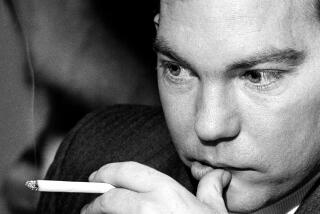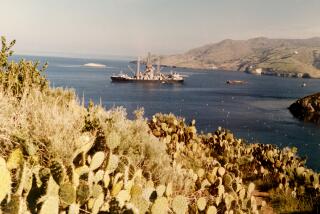Another Instance of a Losing Battle
- Share via
“One Day Too Long” is an invaluable book about one important incident in the secret war in Laos in 1968 that appears at a most opportune time. The United States is again at war in a distant land, against an enemy few Americans know well, for purposes not yet clearly defined. This is a book that all commanders in the current war with Yugoslavia, from President Clinton on down, should read for profit and sober reflection.
The tale is tightly told by Timothy N. Castle, who served in the Air Force during the Vietnam War, flying 38 combat support missions over Laos. Castle was later a senior Department of Defense investigator for POWs and MIAs.
The essence of Castle’s cautionary tale is this: President Johnson undertook to bomb North Vietnam to force the North Vietnamese to a peace conference table. But for much of the year the skies over North Vietnam were cloudy and rainy, and the United States had few planes that could see their targets through the bad weather.
The huge B-52s could, but Johnson did not want to use them: They were vulnerable to surface-to-air missiles, and Johnson also feared their presence might provoke the Soviets and the Chinese.
The Joint Chiefs of Staff thereupon developed the plan to put radar equipment on a mountain in Laos near the Vietnamese border. That equipment would be able to see through the bad weather all the way across North Vietnam 125 miles to Hanoi. The attacking planes could lock onto this radar and follow it straight to the targets.
But under the 1962 Geneva Accords, Laos was supposed to be neutral. The American ambassador to Laos, the incisive, tough William H. Sullivan, opposed the radar plan as inimical to the larger U.S. purposes in Southeast Asia. The CIA, which throughout the Vietnam War was more right than wrong in its predictions, warned that the enemy would attack and overwhelm the radar. But the Joint Chiefs, with White House support, eventually prevailed.
So in 1967 the Air Force selected a site high on the side of a steep 5,300-foot-high limestone mountain. It was thought still important to preserve the “neutrality” fiction about Laos, even though both the Communists and CIA-backed Hmong tribesmen were fighting there, so the men picked to operate it were mustered out of the Air Force and into the civilian employ of Lockheed Aircraft Services Co.
On Nov. 1, 1967, the radar site, code-named “Heavy Green,” went into operation. The somber chain of events predicted by the CIA soon got under way. Less than a few months later, on Jan. 12, the site was attacked by two North Vietnamese biplanes. Vietnamese troops, by the hundreds, then by the thousands, moved toward the mountain. Increasingly the radar was used not to direct attacks against North Vietnam but against the troops threatening the site.
The Americans on the mountain thought its steepness protected them. They were wrong. The CIA increased its warnings about the dangers: Ambassador Sullivan was worried. The Air Force commanders, though, thought the site was too valuable to be evacuated.
On March 10, 1968, a team of North Vietnamese scaled the mountain and in the early morning attacked the lightly armed Americans. U.S. helicopters made daring rescues, but in the end 11 men were either dead or missing.
Then began the torment of the men’s families. Over the next three decades the government lied to them, concealing what the men had been doing, threatening the families with a cutoff of their benefits if they talked. The story of those 30 years is a sordid tale of serious government misconduct, brought to light by one surviving wife, Ann Holland, and now by Castle’s meticulously researched reconstruction of those events.
This fine book’s lessons for the commanders of the current war are to think through what you are doing, face the consequences and tell the truth, both to the American people and to yourselves.
More to Read
Sign up for Essential California
The most important California stories and recommendations in your inbox every morning.
You may occasionally receive promotional content from the Los Angeles Times.












